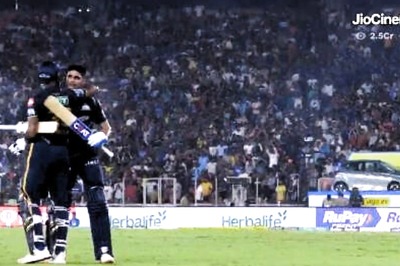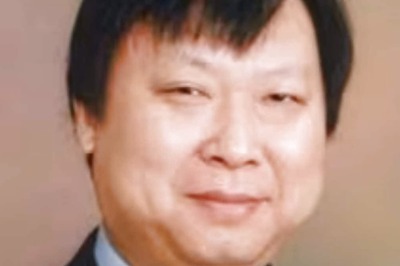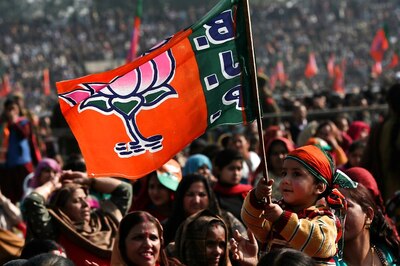
views
On land, they may be the most powerful men in the country. But in the skies, they are all equally powerless—at the mercy of the weather gods, the vulnerability of their flying machines, and the limitations of their human pilots. India’s political history is not just filled with, but also shaped by, the untimely deaths of those who were snatched away in the air. And in a curious set of coincidences, very often the Congress party has usually had to deal with the ripple effects of an aviation tragedy.
Perhaps one of the first Indian political leaders to die in a plane crash was freedom fighter Subhas Chandra Bose, on August 18, 1945, in what is now Taiwan, though many continue to believe he survived the mishap. Netaji’s animosity towards his former party the Indian National Congress was well known at this point. But the mystery that continues to shroud the circumstances behind his death has come back to bite the party in recent years, with the BJP and many Netaji fans holding the Jawaharlal Nehru government responsible for covering up the facts of the case.
35 years later, tragedy hit home for the Congress party. On June 23, 1980, Sanjay Gandhi crashed his glider shortly after taking off from the Safdarjung Airport in Delhi. The younger son of the-then Prime Minister Indira Gandhi was widely tipped to be her heir and his demise forced his elder brother Rajiv to enter active politics and eventually become PM. Today, his family controls the grand old party.
Irony wrote itself in July this year when Jyotiraditya Scindia took oath as the minister of civil aviation. Exactly 20 years ago, his father Madhavrao Scindia, a former aviation minister himself, was killed in a Cessna aircraft crash while travelling to address a public rally on the outskirts of Mainpuri in Uttar Pradesh. Madhavrao’s death left a big void in Madhya Pradesh’s politics but also heralded his son’s eventual political entry. And when Jyotiraditya sensationally dumped the Congress to defect to the BJP last year, the party found itself once again sorely missing the late Maharaja of Gwalior.
The Congress’s terrible luck in air mishaps continued in 2005 when then two ministers in the Haryana cabinet, power minister OP Jindal and agriculture minister Surendra Singh, were killed as the chopper carrying them went down with a technical snag in Saharanpur.
But in 2009, the party faced its biggest setback yet. YSR Reddy, Andhra Pradesh’s wildly popular chief minister and arguably the only vote catcher in the party outside the Gandhis, went down in a Bell 430 chopper in Chittoor district. His death triggered a chain reaction that led to the Congress losing power and relevance in the state. YSR’s son Jagan went on an Odarpu Yatra (condolence tour) in his honour, drumming up massive support to inherit his father’s chair. 10 Janpath refused to relent and a furious Jagan left the party, cleaving it right down the middle. Exactly 10 years later, Jagan was the chief minister and the Congress was all but wiped out.
What happened to the Congress in Andhra Pradesh was almost replicated in Arunachal Pradesh. In April 2011, the chopper carrying chief minister Dorjee Khandu on a trip from Tawang to Itanagar disappeared. His death was declared almost a week later, plunging the state Congress leadership into chaos, from which it never recovered in the next decade. Today, just like Andhra Pradesh, Arunachal has the son of its late CM in the chair: but not from the Congress. Pema Khandu defected from his father’s party in 2016 and eventually joined the BJP.
All twists of fate that have ended up deciding the course of history.
Read all the Latest India News here
















Comments
0 comment